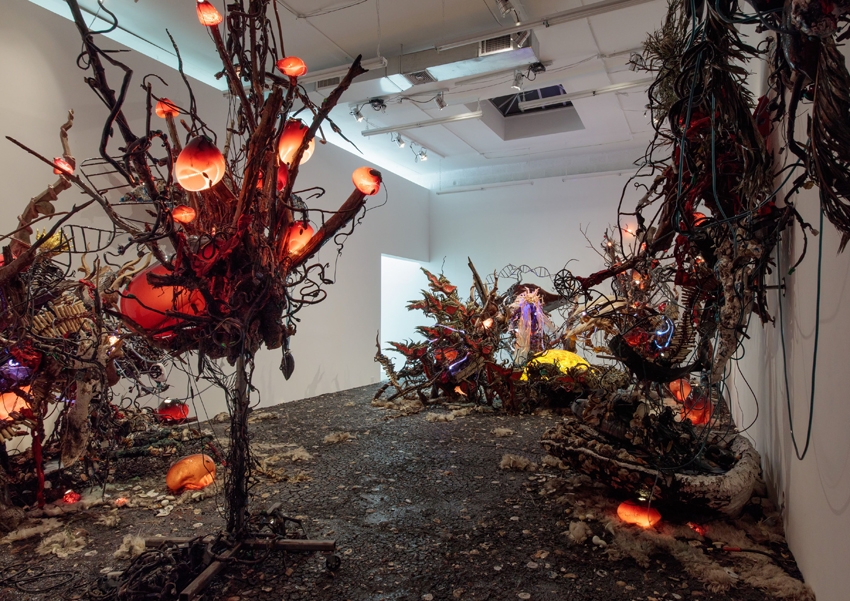Clearing, New York 11 March – 7 May
In this idiomatically titled exhibition, Korakrit Arunanondchai poses a question: will you find beauty in this sea of data? This not only signals the Thai artist’s longstanding investment in formal lyricism but in his strategy of ‘making sense’ of our increasingly abstract techno-material condition through aesthetic techniques. He tackles the unrepresentability of the somewhat tired term ‘the Anthropocene’ through projections of cultural, personal and religious myth sourced both from his native Thailand and his adopted home of New York City.
This culminates, stronger than ever, in with history… 4, in which an eponymously titled 23-minute cine-essay addresses the present through two intersecting historical moments: the rise of Trump and the death of the king of Thailand. Although the two are worlds apart geographically and ideologically, the artist draws comparisons to the gathering of people at protest rallies and mass-mourning events – a return to physical togetherness in times of global political uncertainty. We also meet Tipyavarna Nitibhon, the artist’s grandmother, as she is descending into dementia, trying to cling on to the familiar materiality of her surroundings. “In this body the data is alive but it is stuck in a loop,” the narrator muses, as Nitibhon is portrayed ritualistically placing a brick piece inside a slipper atop a pile of tabloid magazines. These spontaneous and domestic ‘assisted readymades’ are displayed in the farthest room of the exhibition, entitled With History… 4 (house) (1979–2017), and demand a sombre meditation as material indexes of cognitive deterioration.
Recent neuroscience affirms that the brain is itself materially plastic, and rewires its faculties according to need. Philosopher Catherine Malabou finds in this new forms of domination, but also resistance. Arunanondchai too is invested in formulating new alliances between psychic, cultural and technological life. A totemic installation, With History… 4 (garden) (2017), manifests this materially: on a bulky terrain of soil and seafood shells (sourced from NYC restaurants), he envisions a postapocalyptic temple of Nāga, the Buddhist and Hindu snake-deity too powerful to be subjected to any state power, in a potpourri of fibre optics, dead pine trees, old car parts and glowing glass bulbs.
In the artist’s hands, these examples of popular animism are like hackers, guiding spirits that travel across the materiality of globalised capitalism, reconfiguring postures of resistance. While Arunanondchai previously gestured to the constructed artist-persona and the mythologised site of painting, he is here more urgently concerned with the ‘stuff ’ of the world – the cycles of carbon, of capital, of spirits and of data, all jumbled together in an overwhelming cosmology that nonetheless possesses moments of powerful clarity. This position is effective, and much less fashionable. Facing outward, its success lies in the idiosyncratic investigation into the human sensorium and its impulse to plastically produce connections and find beauty in our material, psychic and digital life.
From the May 2017 issue of ArtReview
